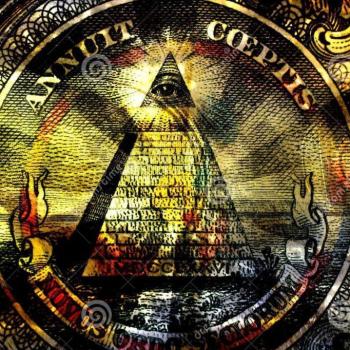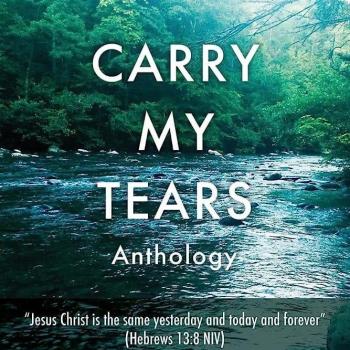
Members of The Church of Jesus Christ of Latter-day Saints (or “Mormons”) have four books which are considered part of the Church’s official canon. These books are often collectively referred to as the “standard works” of the Church.
The Holy Bible
The first of their scriptural texts is the Holy Bible—both Old and New Testaments. While any translation is allowed, Latter-day Saint Christians often prefer the King James Version of the Bible, primarily because that was the translation most commonly accepted in English speaking countries at the time the Church adopted it, and the proliferation of modern translations had yet to happen when the Church decided to adopt the KJV.While a significant number of Christian denominations include the Apocrypha in their biblical canon, like many low-church protestant denominations, The Church of Jesus Christ of Latter-day Saints does not consider the Apocrypha as part of their canon—though members are certainly allowed to use it, and the Church teaches that “whoso is enlightened by the Spirit shall obtain benefit” from the Apocrypha. Nonetheless, it does not appear in any of the Church produced printings of the English-language versions of the Holy Bible.
The Book of Mormon
The second of their scriptural texts is The Book of Mormon—Another Testament of Jesus Christ. Whereas the Holy Bible is a record of God’s dealings with His children on the Eastern Hemisphere, Latter-day Saints believe that The Book of Mormon is a record of His dealings with His children who dwelt anciently on the Western Hemisphere. The introduction to The Book of Mormon explains:
The Book of Mormon is a volume of holy scripture comparable to the Bible. It is a record of God’s dealings with ancient inhabitants of the Americas and contains the fulness of the everlasting gospel.
The book was written by many ancient prophets by the spirit of prophecy and revelation. Their words, written on gold plates, were quoted and abridged by a prophet-historian named Mormon.
The record gives an account of two great civilizations. One came from Jerusalem in 600 B.C. and afterward separated into two nations, known as the Nephites and the Lamanites. The other came much earlier when the Lord confounded the tongues at the Tower of Babel. This group is known as the Jaredites. After thousands of years, all were destroyed except the Lamanites, and they are among the ancestors of the American Indians.
The crowning event recorded in the Book of Mormon is the personal ministry of the Lord Jesus Christ among the Nephites soon after His resurrection. It puts forth the doctrines of the gospel, outlines the plan of salvation, and tells men what they must do to gain peace in this life and eternal salvation in the life to come.
While many erroneously assume that The Book of Mormon is the Bible of the Latter-day Saints, in fact, it is simply a “companion volume” to the Holy Bible—not replacing it but standing alongside of it as a second witness or “another testament of Jesus Christ” (as its subtitle indicates).
The Doctrine and Covenants
The third scriptural text of The Church of Jesus Christ of Latter-day Saints is the Doctrine and Covenants (sometimes simply referred to as the “D&C”). As explained in its introduction:
The Doctrine and Covenants is a collection of divine revelations and inspired declarations given for the establishment and regulation of the kingdom of God on the earth in the last days. Although most of the sections are directed to members of The Church of Jesus Christ of Latter-day Saints, the messages, warnings, and exhortations are for the benefit of all mankind and contain an invitation to all people everywhere to hear the voice of the Lord Jesus Christ, speaking to them for their temporal well-being and their everlasting salvation.
Most of the revelations in this compilation were received through Joseph Smith Jr., the first prophet and president of The Church of Jesus Christ of Latter-day Saints. Others were issued through some of his successors in the Presidency (see headings to D&C 135, 136, and 138, and Official Declarations 1 and 2).
The book of Doctrine and Covenants is one of the standard works of the Church in company with the Holy Bible, the Book of Mormon, and the Pearl of Great Price. However, the Doctrine and Covenants is unique because it is not a translation of an ancient document, but is of modern origin and was given of God through His chosen prophets for the restoration of His holy work and the establishment of the kingdom of God on the earth in these days. In the revelations, one hears the tender but firm voice of the Lord Jesus Christ, speaking anew in the dispensation of the fulness of times; and the work that is initiated herein is preparatory to His Second Coming, in fulfillment of and in concert with the words of all the holy prophets since the world began.
In essence, the Doctrine and Covenants is a book of revelations—received by prophets in the 19th and 20th centuries—and complied into a singular volume, standing as a witness to the world that God still speaks to His children today, as He did in ancient times. That is a crucial point in Latter-day Saint theology, as they hold that one of the distinguishing attributes of their particular denomination is that they believe in ancient and modern prophets and apostles. The Doctrine and Covenants is a sampling of some, though not all, of the revelations these latter-day revelators have received from the divine (since the days of the founding of The Church of Jesus Christ of Latter-day Saints, in the early 1830s).
The Pearl of Great Price
The fourth and final book of sacred scripture in the Latter-day Saint canon is the Pearl of Great Price. This book is unique, in that it contains translations or modern renderings of Old Testament era revelations (i.e., the books of “Moses” and “Abraham”), New Testament revelations (i.e., “Joseph Smith—Matthew”), and canonized excerpts from the Church’s history (i.e., “Joseph Smith—History”). In addition, the Pearl of Great Price includes what might be called some brief “credal statements” (i.e., the “Articles of Faith”), summarizing the Church’s most important theological beliefs. The introduction to the Pearl of Great Price explains:
The Pearl of Great Price is a selection of choice materials touching many significant aspects of the faith and doctrine of The Church of Jesus Christ of Latter-day Saints. These items were translated and produced by the Prophet Joseph Smith, and most were published in the Church periodicals of his day.
The following is a brief introduction to the contents:
1. Selections from the Book of Moses. An extract from the book of Genesis of Joseph Smith’s translation of the Bible, which he began in June 1830.
2. The Book of Abraham. An inspired translation of the writings of Abraham. Joseph Smith began the translation in 1835 after obtaining some Egyptian papyri. The translation was published serially in the Times and Seasons beginning March 1, 1842, at Nauvoo, Illinois.
3. Joseph Smith—Matthew. An extract from the testimony of Matthew in Joseph Smith’s translation of the Bible (see Doctrine and Covenants 45:60–61 for the divine injunction to begin the translation of the New Testament).
4. Joseph Smith—History. Excerpts from Joseph Smith’s official testimony and history, which he and his scribes prepared in 1838–39 and which was published serially in the Times and Seasons in Nauvoo, Illinois, beginning on March 15, 1842.
5. The Articles of Faith of The Church of Jesus Christ of Latter-day Saints. A statement by Joseph Smith published in the Times and Seasons March 1, 1842, in company with a short history of the Church that was popularly known as the Wentworth Letter.
While there are other texts that Latter-day Saint Christians perceive as inspired (e.g., the official teachings of leaders whom they sustain as Prophets, Seers, and Revelators), the four “standard works” of the Church (the Bible, Book of Mormon, Doctrine and Covenants, and Pearl of Great Price) constitute its official canon—and set The Church of Jesus Christ of Latter-day Saints apart from other Christian denominations, because of their acceptance of ancient scriptural texts beyond the Holy Bible, and also modern scriptural texts received in the 19th through 21st centuries.
3/14/2023 7:08:53 PM










